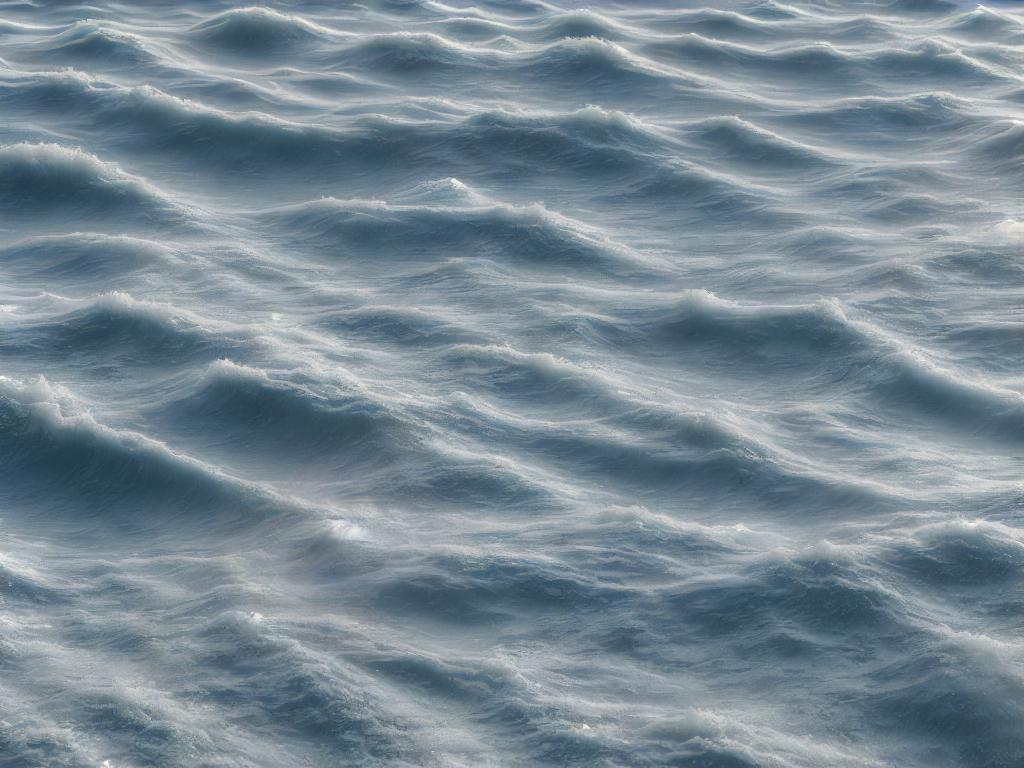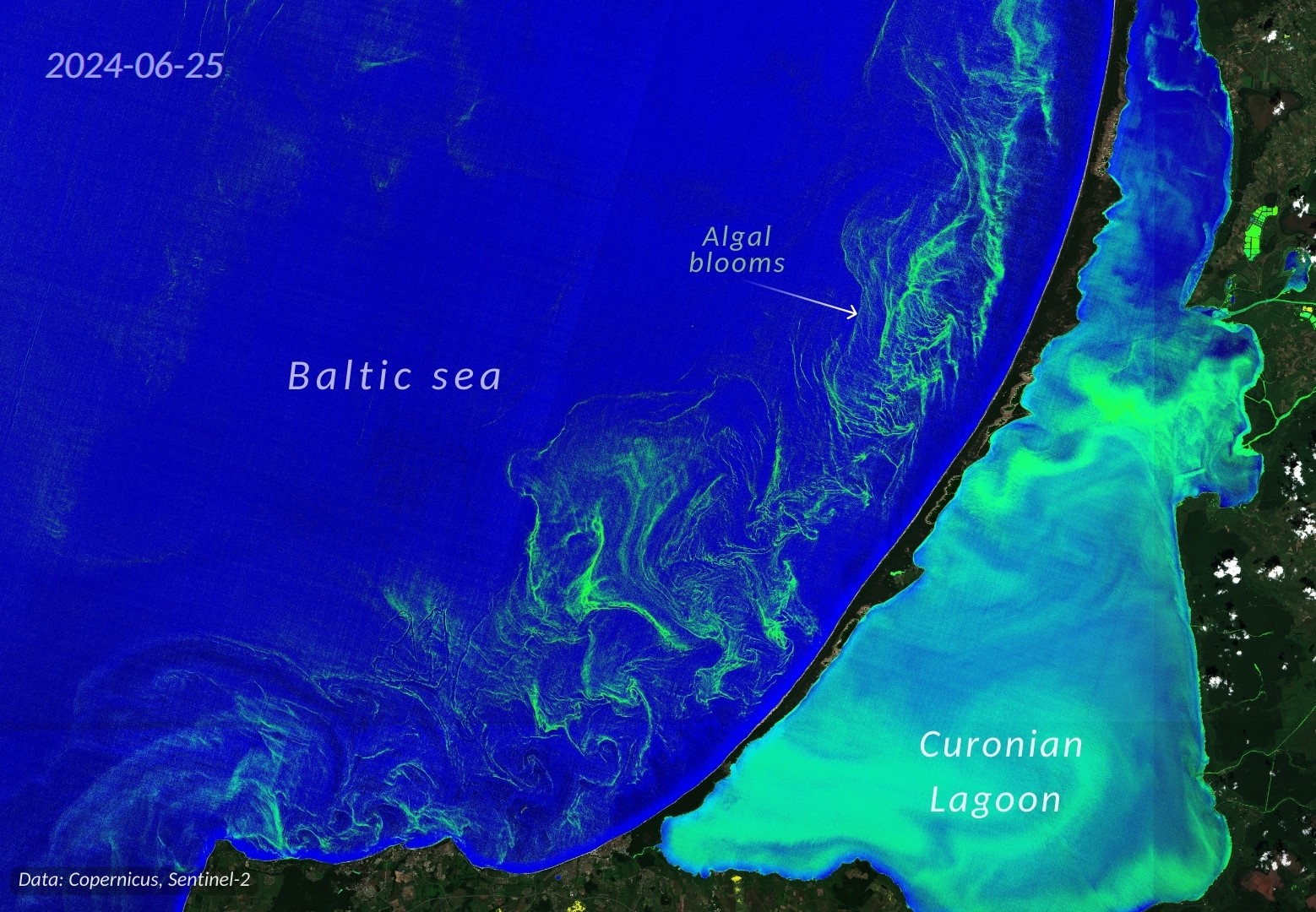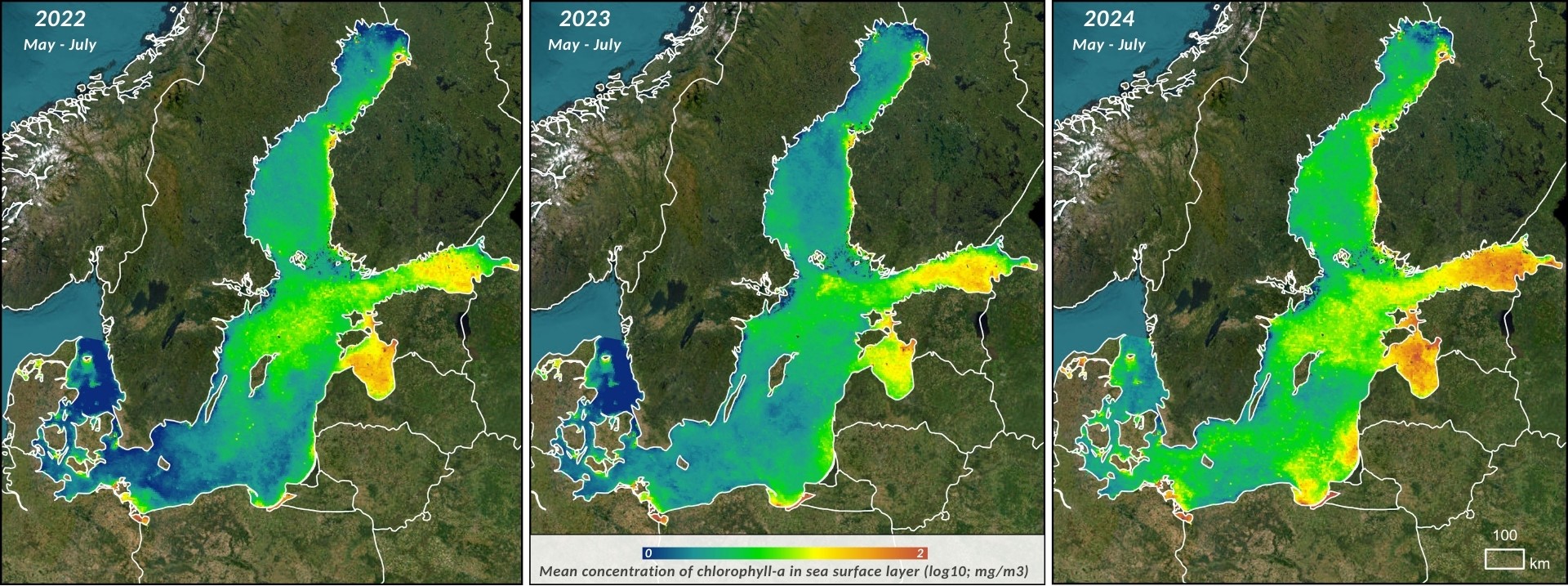Baltic Algal Blooms Can Be Observed From Space
 Every summer, as holidaymakers flock to the Baltic Sea, we also hear about algal blooms that intensify in the warm season. Elzė Buslavičiūtė and Dr Laurynas Jukna, geographers from the Department of Geography and Land Management of Vilnius University, explain how this phenomenon can be monitored using data from Earth observation satellites.
Every summer, as holidaymakers flock to the Baltic Sea, we also hear about algal blooms that intensify in the warm season. Elzė Buslavičiūtė and Dr Laurynas Jukna, geographers from the Department of Geography and Land Management of Vilnius University, explain how this phenomenon can be monitored using data from Earth observation satellites.
The Baltic Sea ranks among the most polluted seas worldwide
The semi-enclosed Baltic Sea, surrounded by nine countries, is considered one of the world’s most polluted seas. Its enclosed nature, nearby economic activities, climate change, and extreme precipitation contribute to the eutrophication now affecting 97% of the Baltic Sea. Eutrophication is the process by which a body of water becomes enriched in dissolved nutrients, stimulating the growth of aquatic plant life, usually resulting in the depletion of dissolved oxygen. Excess nutrients, such as nitrogen or phosphorus, often introduced into the water from agricultural fertilisers, sewage, or industrial pollution, lead to the rapid growth of phytoplankton.
As they die and the decomposition process unfolds, oxygen levels decline.Oxygen depletion is also caused by increased organic matter that blocks out light, thereby reducing oxygen generated by plant photosynthesis at lower depths. This process leads to the formation of so-called dead zones in the Baltic Sea – areas where hypoxic or anoxic conditions, i.e. partial or complete lack of oxygen, occur. When oxygen is depleted, aquatic organisms either leave their natural habitats or are doomed to die.
Algal blooms tracked by satellites
While we can see algae along the shore or while swimming, algal blooms can also be observed from space. During the summer months, when weather conditions are optimal, and Earth observation satellites pass over the Curonian Spit, green swirls and accumulations of algae can be seen in the lagoon and the sea. Due to the widespread nature of this phenomenon, NASA and the European Space Agency (ESA) often share images of algal blooms in the Baltic Sea and the Curonian Lagoon. The below false-colour composite image depicts algal blooms in the Curonian Lagoon and on the shores of the Baltic Sea captured at the end of June.

Remote sensing data on water spectral reflectance provides information on phytoplankton biomass, which is determined based on the concentration levels of chlorophyll-a, i.e. a green pigment found in algae. In addition, backscattering data can also be used to measure suspended solids in water.
Algae absorb mainly blue light and reflect green wavelengths, while clear water better reflects blue light rather than green. Therefore, the derived ratio of blue-to-green reflectance is inversely proportional to the concentration of chlorophyll-a. Moreover, thermal sensing can also be used to monitor the effect of temperature on algal blooms.
International monitoring missions are often set up to assess chlorophyll-a concentrations, one of which is the Global Change Observation Mission (GCOM) carried out by the Japan Aerospace Exploration Agency (JAXA). Two related satellites, ‘Shizuku’ and ‘Shikisai’, have been launched as part of this mission to estimate the build-up of chlorophyll-a based on the reflectance ratios of the blue-to-green bands. However, in order to determine the exact concentration of chlorophyll-a, these data have to be calibrated, i.e. verified with ground-based data. Thus, the accuracy of GCOM measurements is determined by the availability of ground-measured data across different countries.
The mission data reveal that the highest average chlorophyll-a concentrations in the Baltic Sea from May to July were found along the coastal waters of the central-eastern and south-eastern regions – the Gulfs of Finland and Riga. The available data show that the latest chlorophyll-a concentration levels exceeded those recorded in 2022 and 2023. In recent years, according to the European Environment Agency, chlorophyll concentrations have been rising along the coasts of the Gulf of Bothnia, pointing to a shift from historically lower levels compared to the rest of the Baltic Sea.
Harmful effects of algal blooms

Unsurprisingly, algal blooms are garnering significant attention. In addition to the dead zones mentioned above and the impact on the health and populations of fish and other marine organisms, they can also cause various human health issues. Cyanobacteria produce toxins that can lead to allergic reactions, digestive disorders, and even chronic liver diseases.
However, over the years, it has been observed that average chlorophyll concentrations tend to decrease in some parts of the Baltic Sea due to the elimination of significant sources of pollution, improved sewage treatment systems, and restricted industrial pollution. Nevertheless, agricultural activity, which makes up almost half of all nitrogen and phosphorus load in the Baltic Sea, remains the main source of nutrients, while shorter winters, rising temperatures, and heavier rainfall are continuously intensifying eutrophication.